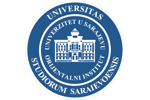Linguistic Units in the Bosnian Language in Mula Mustafa Bašeskija’s Chronicle
Abstract
The paper describes the position and function of the Bosnian linguistic units which mainly make the lexical layer in Mula Mustafa Bašeskija.s chronicle that he wrote in the Turkish language in Sarajevo in the 18th century. It analyses the way in which that Bosnian text was included in the Turkish text. The fact that the majority of the sentences written down in the Bosnian language belong to the speech of the characters mentioned by the author is pointed to. The nicknames written down in the Bosnian language are part of the names of the characters which the writer wants to leave reliable evidence about. The Bosnian units included in the writer.s speech are mainly brought down to individual lexemes. However, even these were often explained in Turkish with the corresponding semantic equivalent, or with a short sentence, i.e., syntagm. The explanations appear in the same context with the given Bosnian unit. The Bosnian lexemes, which in the chronicle text were not explained in the Turkish language, most frequently were the names characteristic of the environment about which the writer writes. Then it is understood from the context to which notion they refer.



